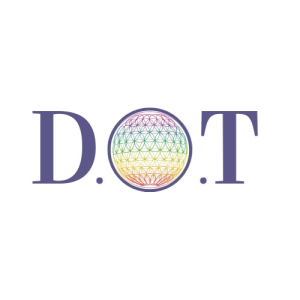Development Over Time Admin
Blog entry by Development Over Time Admin

Author: Clarissa Terracciano
Date: September 30, 2024
Category: Education Technology, Blockchain, AI in Education
Streamlining Transcript Costs with Blockchain
Acquiring transcripts from universities is a small but frustrating financial burden that many students, alumni, and professionals face throughout their careers. From $5 per transcript at my undergraduate institution to a $20 fee for my PhD program, these costs add up quickly. Requesting, verifying, and delivering transcripts remains outdated and costly. But what if this system could be streamlined, made more secure, and—best of all—cheaper? Enter blockchain, a game-changing technology with the potential to disrupt how we handle academic credentials, reducing costs for students and universities alike.
My Transcript Experience:
Transcripts are necessary for most employment opportunities. Throughout my career and academic journey, the cost of obtaining transcripts varied from school to school to employer, which seems neverending.
- Undergraduate Program: Transcript fees ranged between $5 and $15 per request. Over time, the expenses of ordering multiple copies added up.
- Graduate School: Fortunately, my graduate institution charged a one-time lifetime fee for transcript requests, a somewhat more manageable approach.
- PhD Program: At the PhD level, I was charged $20 for transcript requests, a fee that felt unnecessary in our digital age.
Why Does It Cost So Much?
The costs associated with transcripts are not simply arbitrary. Universities must maintain secure records, ensure the validity of these documents, and provide staff to manage transcript requests. This infrastructure results in high costs for both students and institutions. Moreover, the process often involves significant delays, as transcripts are verified, processed, and mailed physically or electronically, exacerbating the inefficiency.
Enter Blockchain Technology:
Blockchain technology can fundamentally change how educational institutions manage, store, and distribute transcripts. By decentralizing the process and using a secure, immutable ledger, blockchain can significantly reduce or eliminate the fees associated with traditional transcript management while improving accessibility and security.
According to Mohammed Ali, Farouk, and Sharaf (2022), blockchain models for student information systems (SIS) offer enhanced security, data integrity, and decentralization, which makes them ideal for managing critical student data like transcripts. The researchers propose blockchain-based SIS models that handle transactions like course registration and grading, ensuring data security and eliminating retroactive alterations.
Additionally, Sutikno and Aisyahrani (2023) emphasize that blockchain's decentralized nature can revolutionize educational credentials, using NFTs to validate diplomas and transcripts. This approach secures student information and ensures global accessibility, making it easier for students to verify and share their academic achievements across borders.
Cost Savings for Students:
For students, the immediate benefit of blockchain is clear: no more paying for transcripts multiple times. With records stored on a blockchain, students can access their academic credentials securely and instantly without intermediary institutions needing to process requests. Ghonim and Corpuz (2021) highlight how blockchain integration into education can enable competency-based approaches while reducing the costs of managing student records and administrative burdens.
Mohammed Ali et al. (2022) found that blockchain-based systems reduce reliance on centralized systems prone to failure, allowing institutions to offer services more efficiently. By decentralizing student data storage, educational institutions can significantly lower costs while ensuring data integrity and security.
Improved Efficiency for Institutions:
Educational institutions also benefit from blockchain’s long-term cost savings. Arshad et al. (2023) illustrate how blockchain reduces the administrative overhead involved in verifying and managing student records. With blockchain, institutions can automate processes such as transcript issuance, saving on labor and time. El Koshiry et al. (2023) further emphasize that blockchain technology can eliminate the need for intermediaries in the credential verification process, improving both efficiency and security for institutions and reducing the risk of fraudulent transcripts.
Moreover, Tan et al. (2023) found that blockchain systems such as the European Blockchain Services Infrastructure (EBSI) allow institutions to verify education credentials in a cross-border setting, highlighting the efficiency and transparency that blockchain brings to the credentialing process. The study showed how blockchain significantly streamlined the verification of student transcripts between Belgium and Italy, suggesting that broader implementation could reduce administrative burdens and prevent fraud.
Fostering Transparency and Trust:
The secure and transparent nature of blockchain can also improve trust among students, employers, and other institutions in academic records. Garg et al. (2022) emphasize that blockchain’s immutability ensures that educational records cannot be tampered with, thus enhancing the trustworthiness of issued credentials. Similarly, El Koshiry et al. (2023) found that blockchain technology simplifies the verification of academic credentials, making it easier to authenticate qualifications tamper-proof and efficient.
As Sutikno et al. (2023) highlighted, blockchain platforms also ensure inclusivity and accessibility by providing global learners with equal access to their educational credentials. This addresses critical equity and social justice issues, as blockchain can democratize access to education records and ensure transparency in academic processes.
Conclusion:
The fees incurred during my academic journey—$5 or $20—are small examples of a much larger issue affecting students and educational institutions worldwide. Blockchain technology offers a solution that reduces costs and increases efficiency and security. By decentralizing the management of academic records, blockchain has the potential to eliminate the need for costly transcript fees, streamline the verification process, and create a more equitable system for all students.
As blockchain continues to evolve, we will likely see it implemented more widely in education, transforming how we store, verify, and access academic credentials. The future of transcript management is not just digital—it’s decentralized.
Call to Action:
If you're an educator, administrator, or policymaker, now is the time to explore how blockchain technology can be integrated into your institution’s processes. Reducing costs, streamlining administrative tasks, and improving security are just a few of the benefits. Let’s work together to make transcript management more accessible and efficient for students everywhere.
Want to learn more? Follow our blog for the latest on blockchain innovations in education, and share your thoughts with us in the comments or on social media. The future of academic record-keeping is here, and it’s blockchain.
Tags: Blockchain technology, Transcript fees, Academic record-keeping, Digital credentials, Higher education innovation, Student data security, Decentralized education systems, Education cost reduction, Credential verification, Education policy transformation
About the author:
Clarissa Terracciano is an experienced educator, educational consultant, and researcher specializing in blockchain technology and its transformative impact on education. Clarissa holds a BA in Psychology from CUNY Hunter College, an MA in Inclusive and Special Education from Teachers College, Columbia University, and is currently completing her PhD in Educational Leadership and Policy Studies at the University of Denver. She is committed to advancing equitable access to education through technology-driven approaches.
References
Ali, S. I. M., Farouk, H., & Sharaf, H. (2022). A blockchain-based models for student information systems. Egyptian Informatics Journal, 23(1), 187-196. https://doi.org/10.1016/j.eij.2021.12.002
Arshad, A., Shahzad, F., Ur Rehman, I., & Sergi, B. S. (2023). A systematic literature review of blockchain technology and its adoption in higher education. International Review of Economics and Finance, 79, 334-344. https://doi.org/10.1016/j.iref.2022.12.016
Cerdan, A., & Jardí, A. (2018). Blockchain in education: On the limit between technology and ideology. Digital Education Review, 34, 15-29. https://doi.org/10.1344/der.2018.34.15
El Koshiry, A., Eliwa, E., Abd El-Hafeez, T., & Shams, M. Y. (2023). Unlocking the power of blockchain in education: An overview of innovations and outcomes. Blockchain: Research and Applications, 4, 100165. https://doi.org/10.1016/j.bcra.2023.100165
Garg, A., A., S., Kumar, P., Madhukar, M., Loyola, C., & Al-Shehri, A. S. (2022). Blockchain-based online education content ranking. Education and Information Technologies, 27(5), 6727-6747. https://doi.org/10.1007/s10639-022-10982-7
Ghonim, A., & Corpuz, I. (2021). Moving toward a digital competency-based approach to education through blockchain. International Journal of Higher Education, 10(3), 1-10. https://doi.org/10.5430/ijhe.v10n3p1
Sutikno, T., & Aisyahrani, A. I. B. (2023). Non-Fungible Tokens, Decentralized Autonomous Organizations, Web 3.0, and the Metaverse in Education: From University to Metaversity. Journal of Education and Learning, 17(1), 1-15. https://doi.org/10.11591/edulearn.v17i1.20657
Tan, E., Lerouge, E., Du Caju, J., & Du Seuil, D. (2023). Verification of education credentials on European Blockchain Services Infrastructure (EBSI): Action research in a cross-border use case between Belgium and Italy. Big Data and Cognitive Computing, 7(79), 1
